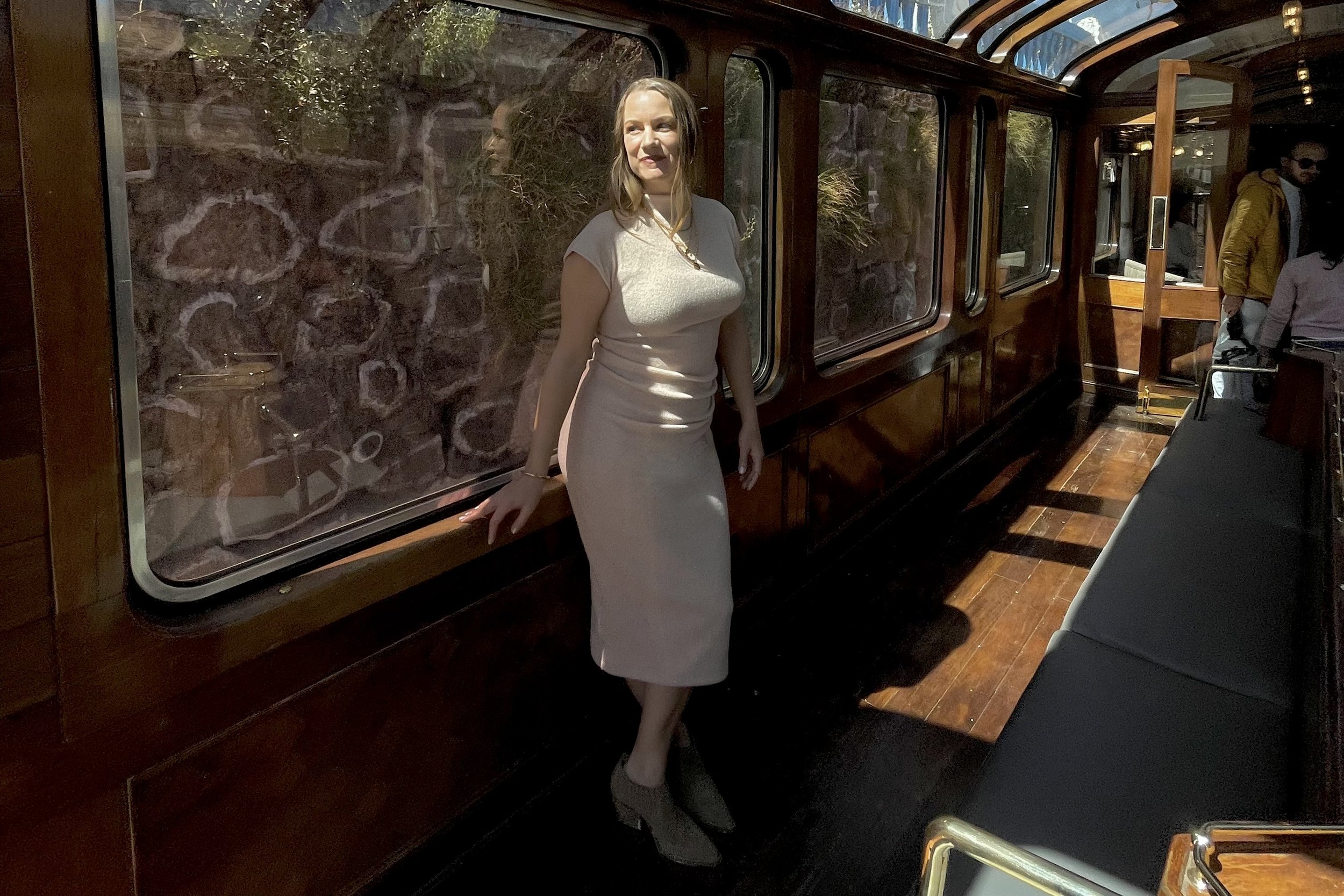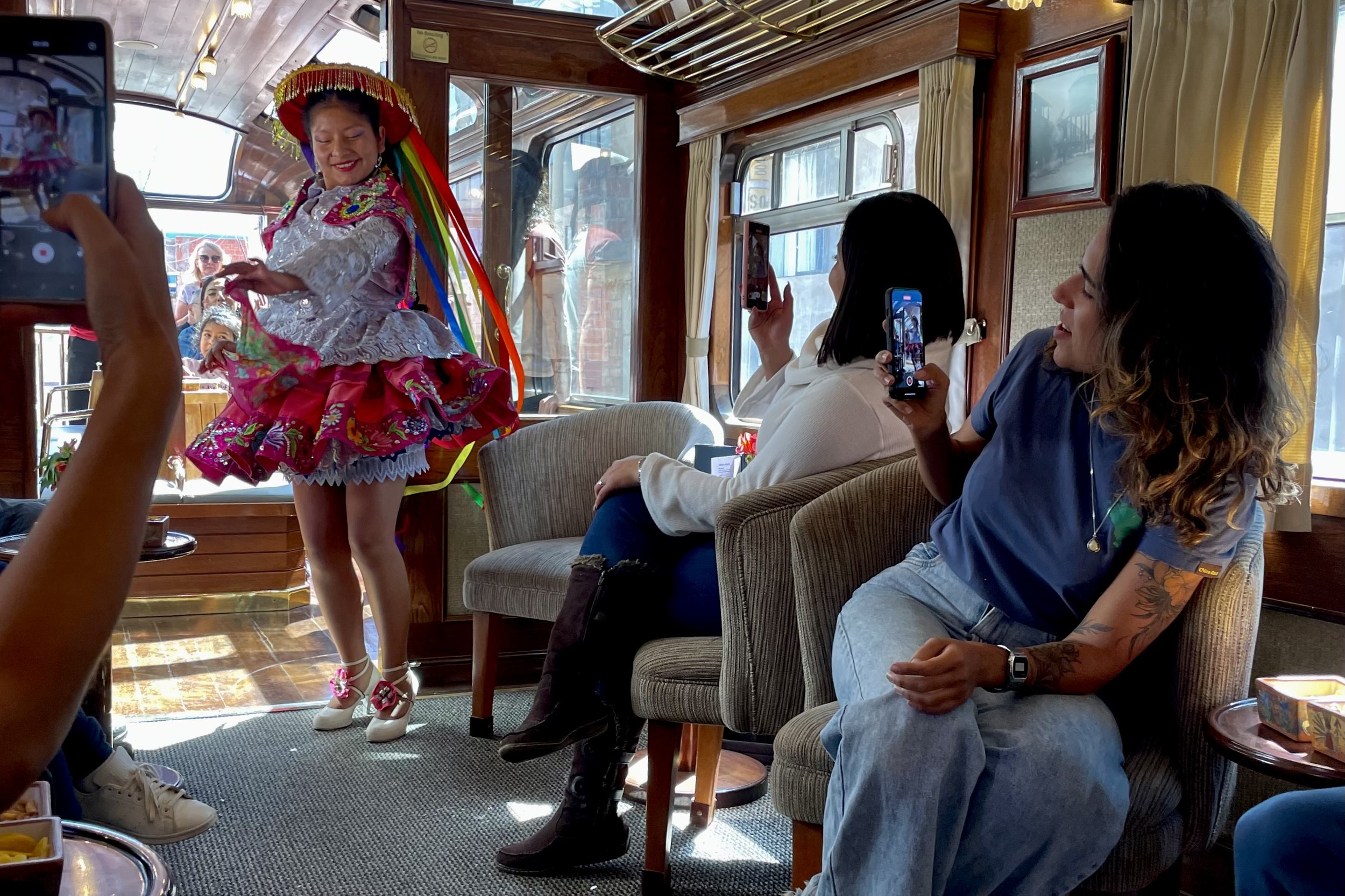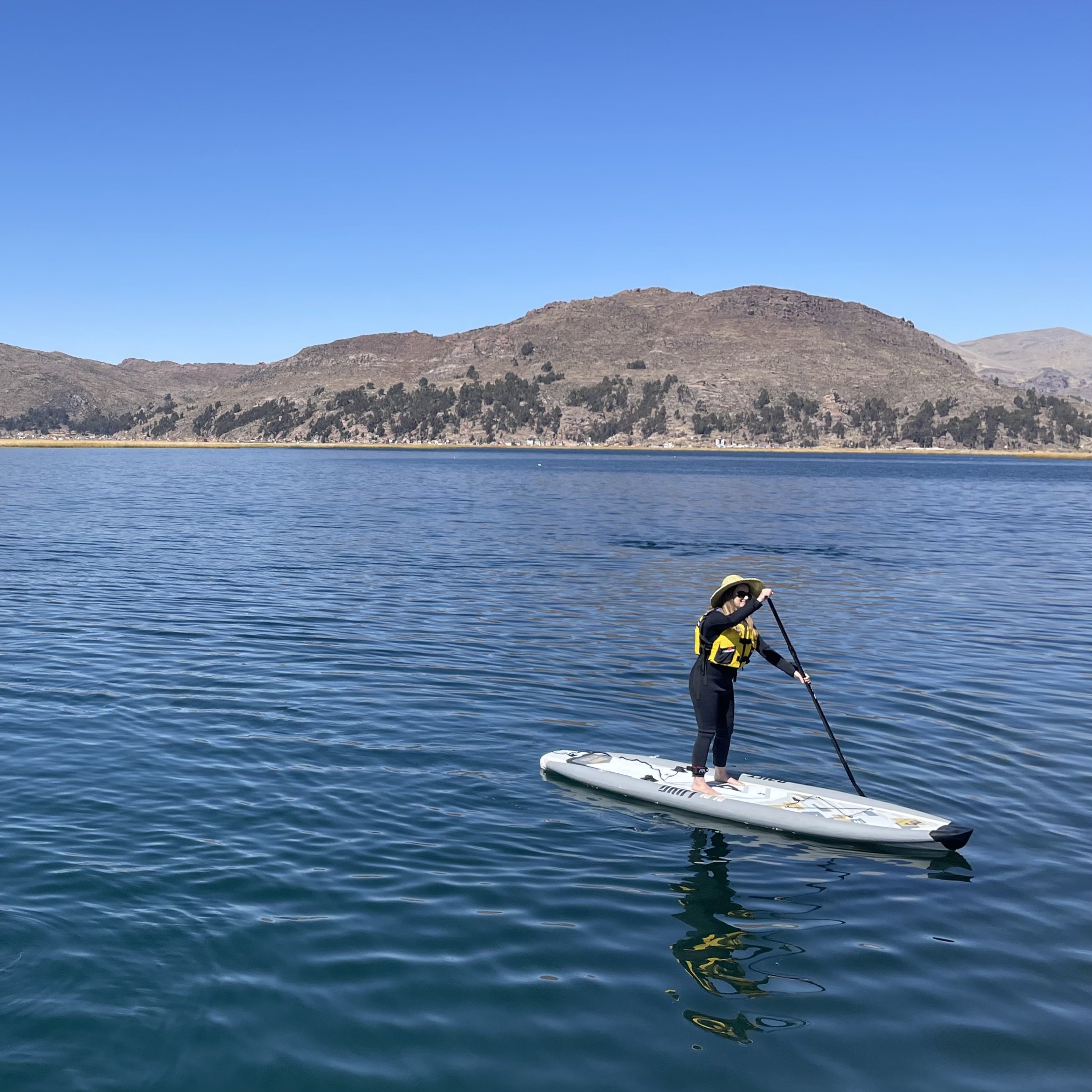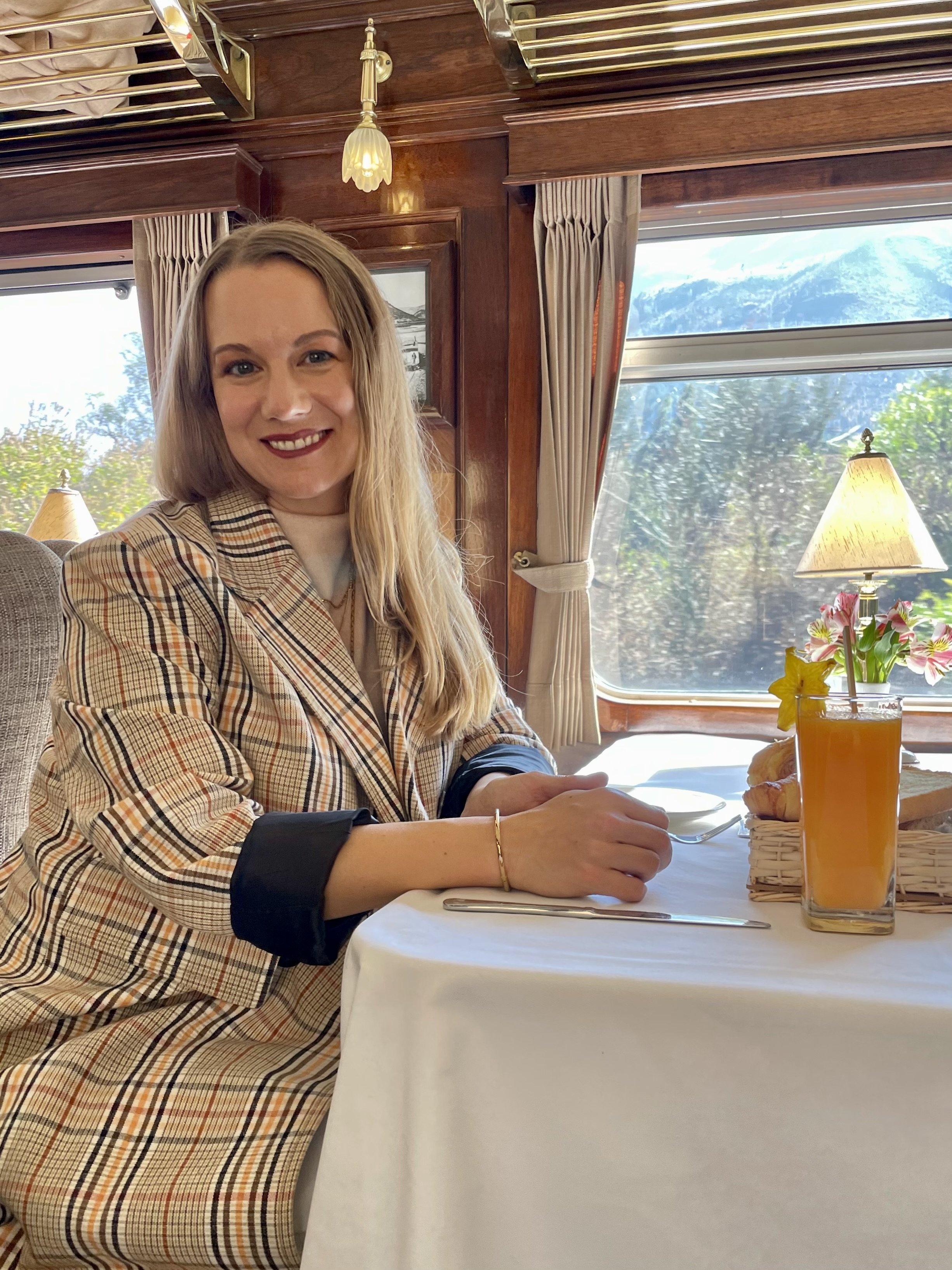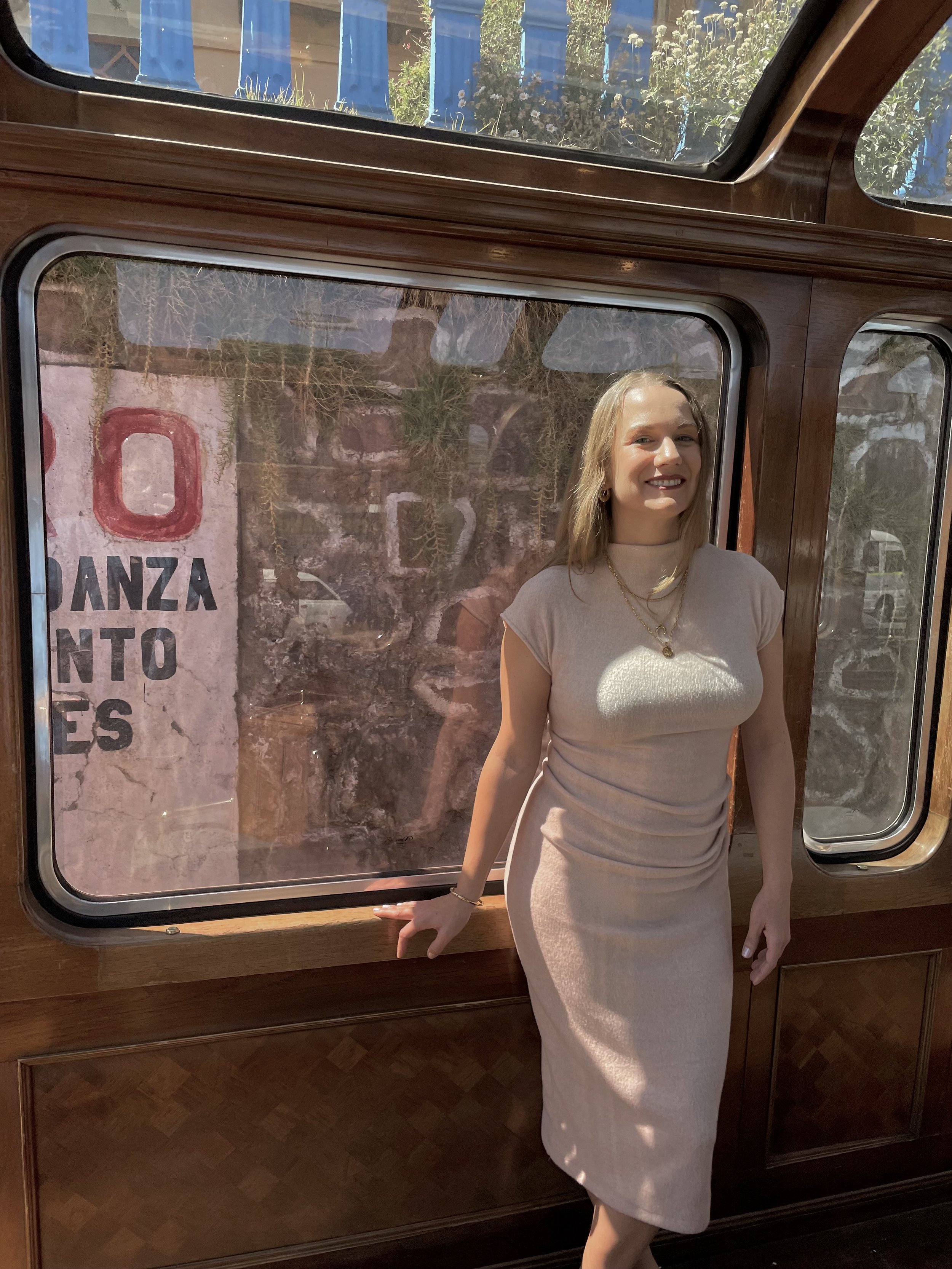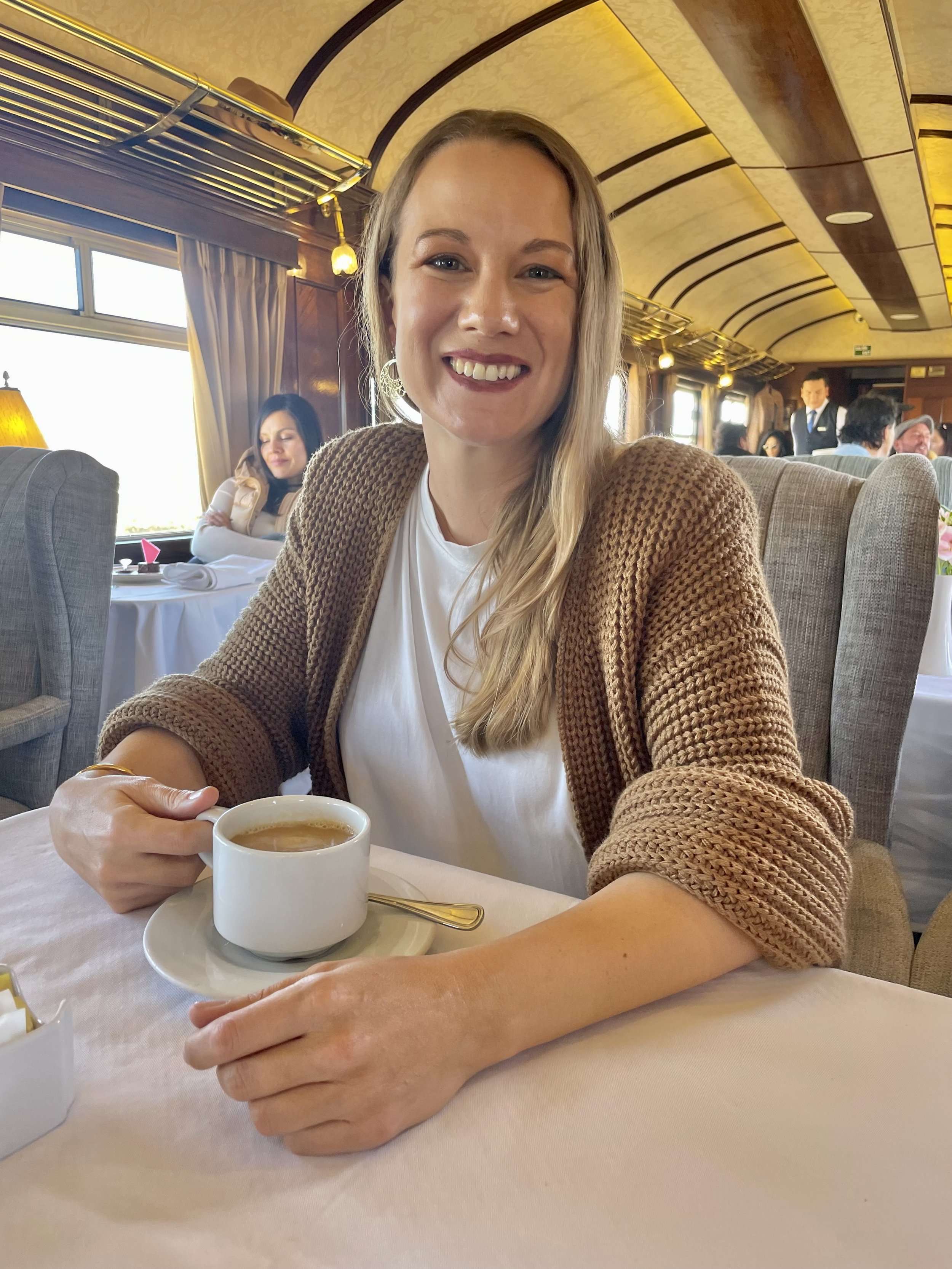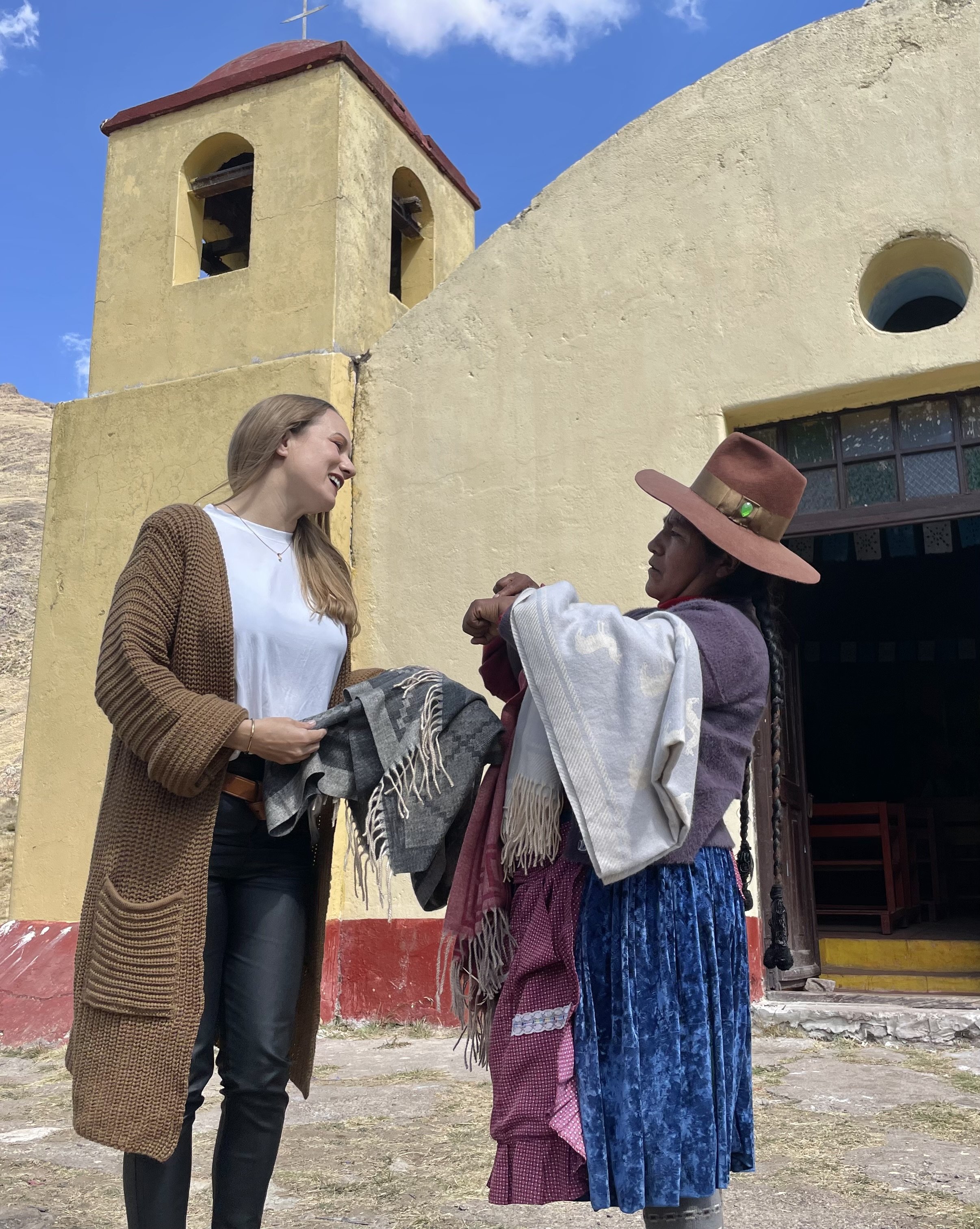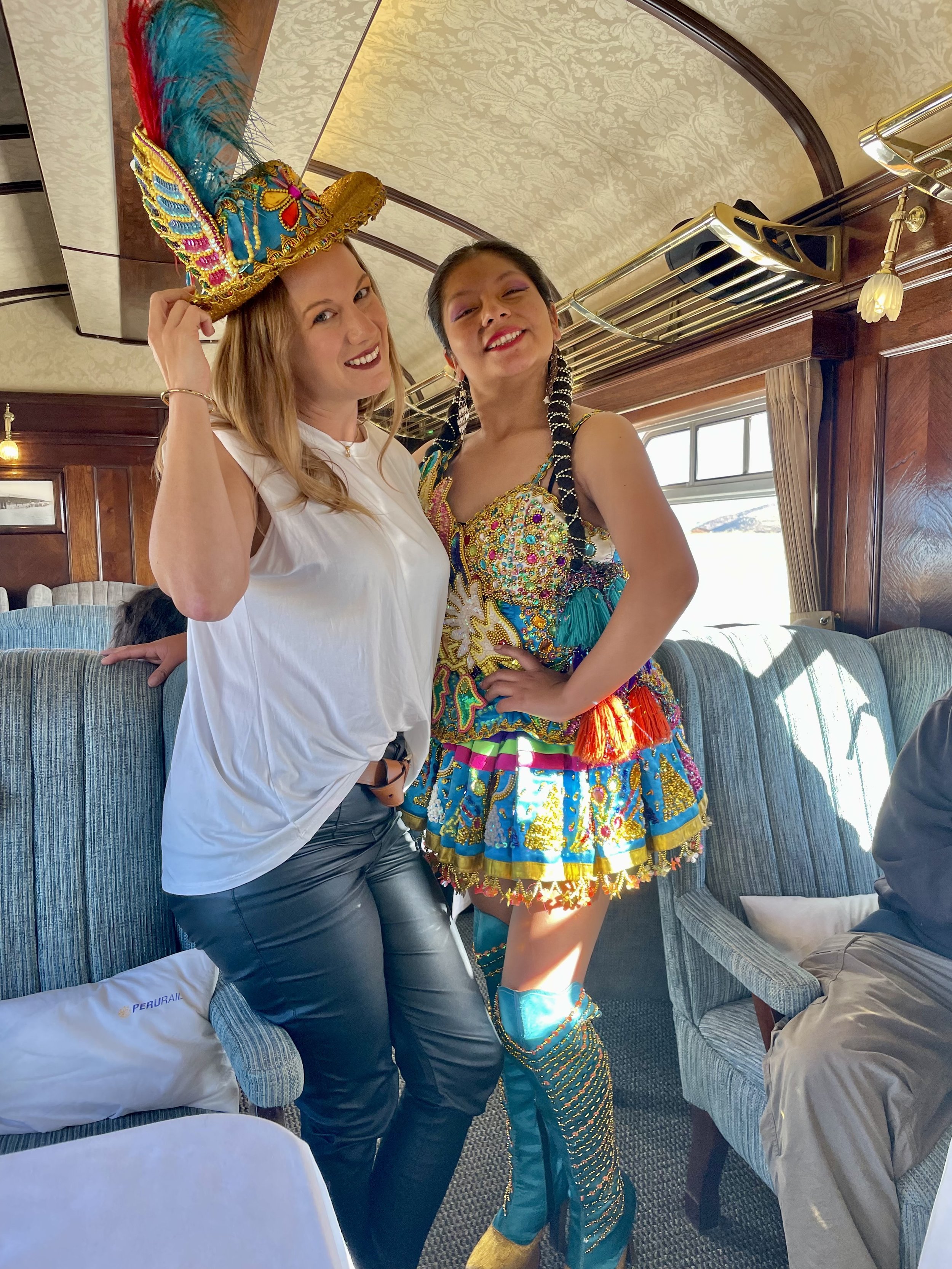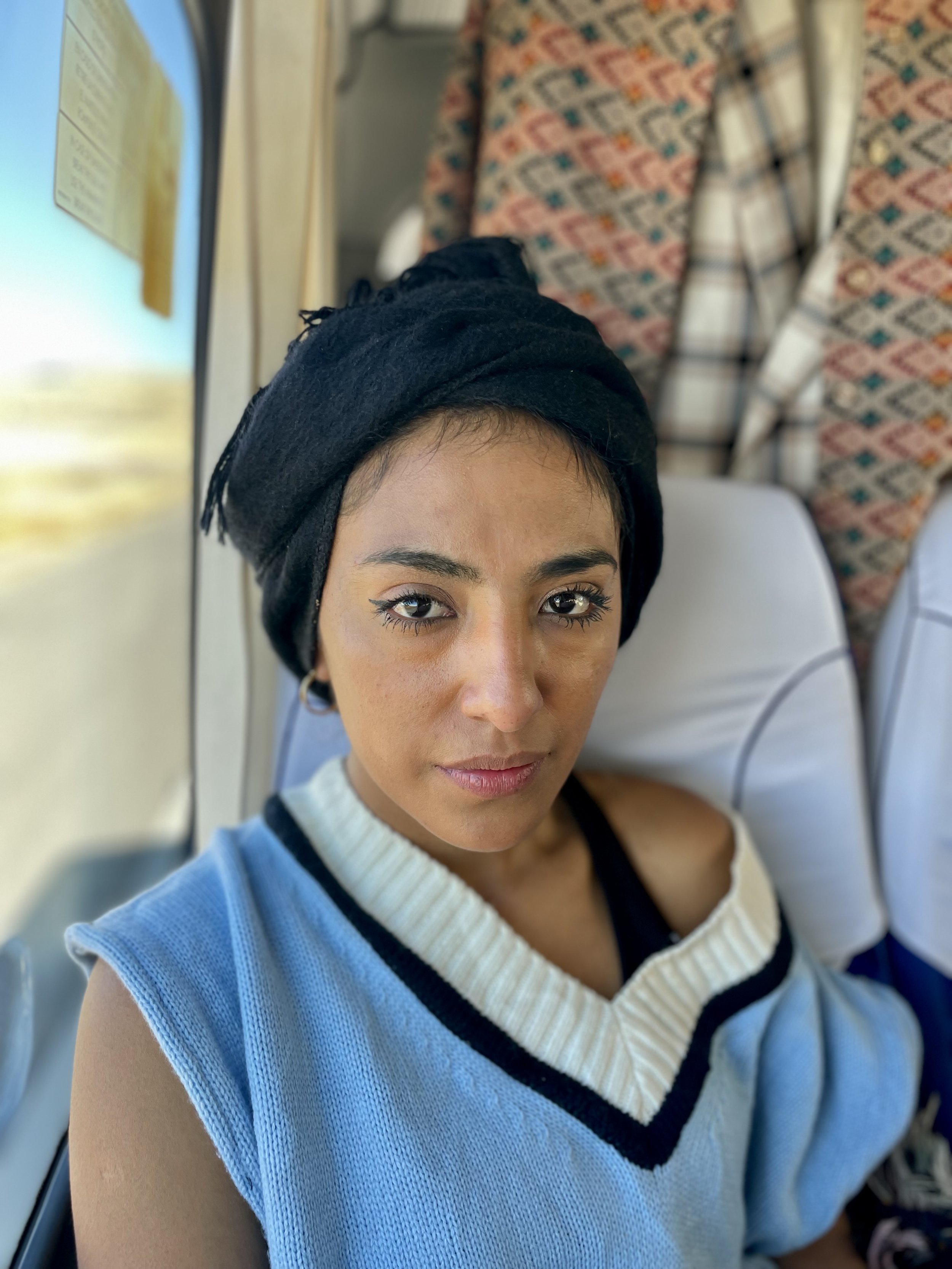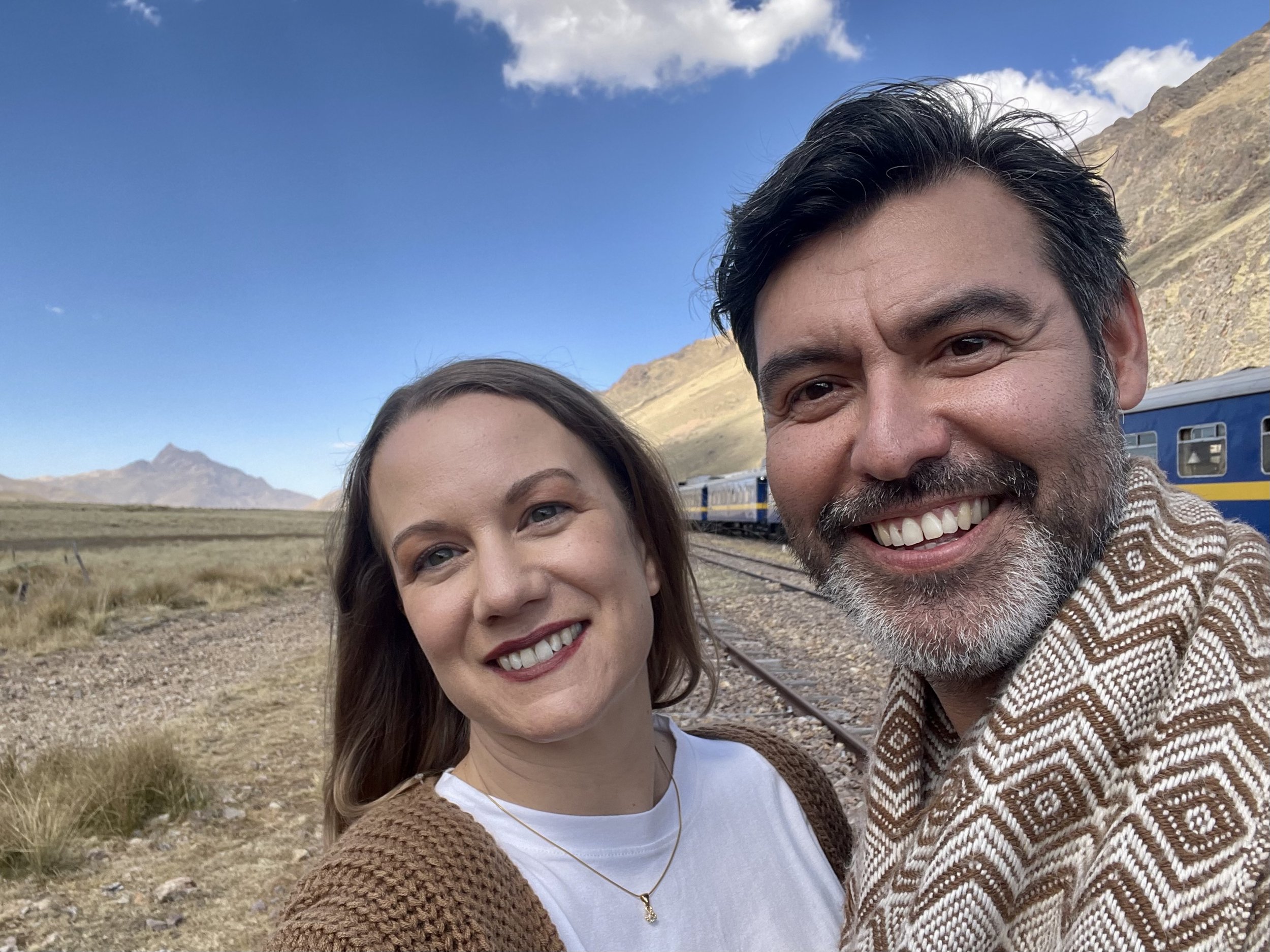Puno & Lake Titicaca
My train tide from Cusco to Puno was rather unconventional.
Espíritu Perú selected me from a casting call for a new series of PeruRail commercials. That meant instead of paying for my train trip from Cusco to Puno, I got paid for it. This was my first time acting in a commercial and it was more work and more fun than I expected. (More on the commercial below).
The train itself is luxurious, with great food and excellent service. It’s the sort of train that is a pleasure to spend all day on. The last train carriage is mostly windows, with an open back so you can take all the photos you want. The second to last carriage is the bar, where you can learn to make a pisco sour and enjoy live music and dance.
I’ve seen these dances on the PeruRail Vistadome that runs between Ollantaytambo and Aguas Calientes, the last stop on your trip to Machu Picchu. The first time I thought it was odd and a bit hokey. The longer I live in Peru, the more I understand how important these dances are to Peruvian culture. Hence, the more I enjoy the experience every time. I truly loved watching the dancer as all the Peruvians around me sang along to what are clearly well-known folk songs.
Juliaca
The train is so luxurious, that it felt like being in a spaceship when we went through the poorest areas of Juliaca on the way to Puno. I’ve been on the ground and seen the train go by. It’s a surreal experience, made stranger by the tourists waving.
Puno Plaza de Armas
Puno is a small city that’s not known for much besides its university and location on Lake Titicaca. It’s a pleasant and calm place with decent hotels and restaurants.
This was my first time at Puno and on the Uros floating islands.
We spent the night in Puno and then went to the lake in the morning to shoot another part of the commercial on the Uros floating islands. The experience was much more interesting than I had expected. Lots of people told me that Uros is too commercial and too touristy. It is very touristy but that certainly didn’t ruin anything for me. (Read about my previous trips to Amantaní Island on Lake Titicaca in this Fodor’s article and this blog).
The Uros floating islands are made with totora reeds, which grow wild throughout the shallow areas of the lake near Puno. Not just the islands are made with totora. Houses, boats, and hats are made with the reeds. At the first island we stopped on, one of our hosts, Doris, said that they’re edible too. Totora can be cooked and eaten like green beans.
Totora reeds
Islanders are constantly gathering more reeds to rebuild islands, houses, boats and make souvenirs. As the lower layers of reeds biodegrade underwater, residents add new layers on top.
The people I met on the islands were very friendly and it seemed genuine. Yes, they also sold souvenirs, but they didn’t pressure us to buy anything. Their smiles weren’t forced, and they seemed eager to answer our questions – not that I had much time to ask questions. I spent most of my time listening to the directors and cameramen tell me what to do.
The name Titicaca means “stone puma,” which explains the puma heads on all the totora boats. The Aymara word for puma is titi and the word for stone is qaqa, which somehow got written as caca. The q sound is made at the back of the throat, like the Arabic letter ق. Aymara is more common in Bolivia than Peru and since Lake Titicaca is shared by the two countries, many Peruvians near the border with Bolivia speak Aymara.
Aymara and Quechua are the two indigenous languages in South America that have been best preserved despite hundreds of years of colonization and now modern globalization. In Bolivia an estimated 2 million people still speak Aymara. More than 3 million in Peru speak Quechua.
SUP Lake Titicaca
This was definitely my favorite part of the whole two days that we were shooting the commercial. I didn’t get to have my phone with me and the photographers were all busy, so I’m thankful that one of the guys got at least one photo for me.
Uros costumes
While I liked all the outfits that costume designer Indra Garcia (below) made for me, I hated the traditional outfit that I was given to wear on the islands. What it’s great for the people who live on the islands, I think it looked ridiculous on me.
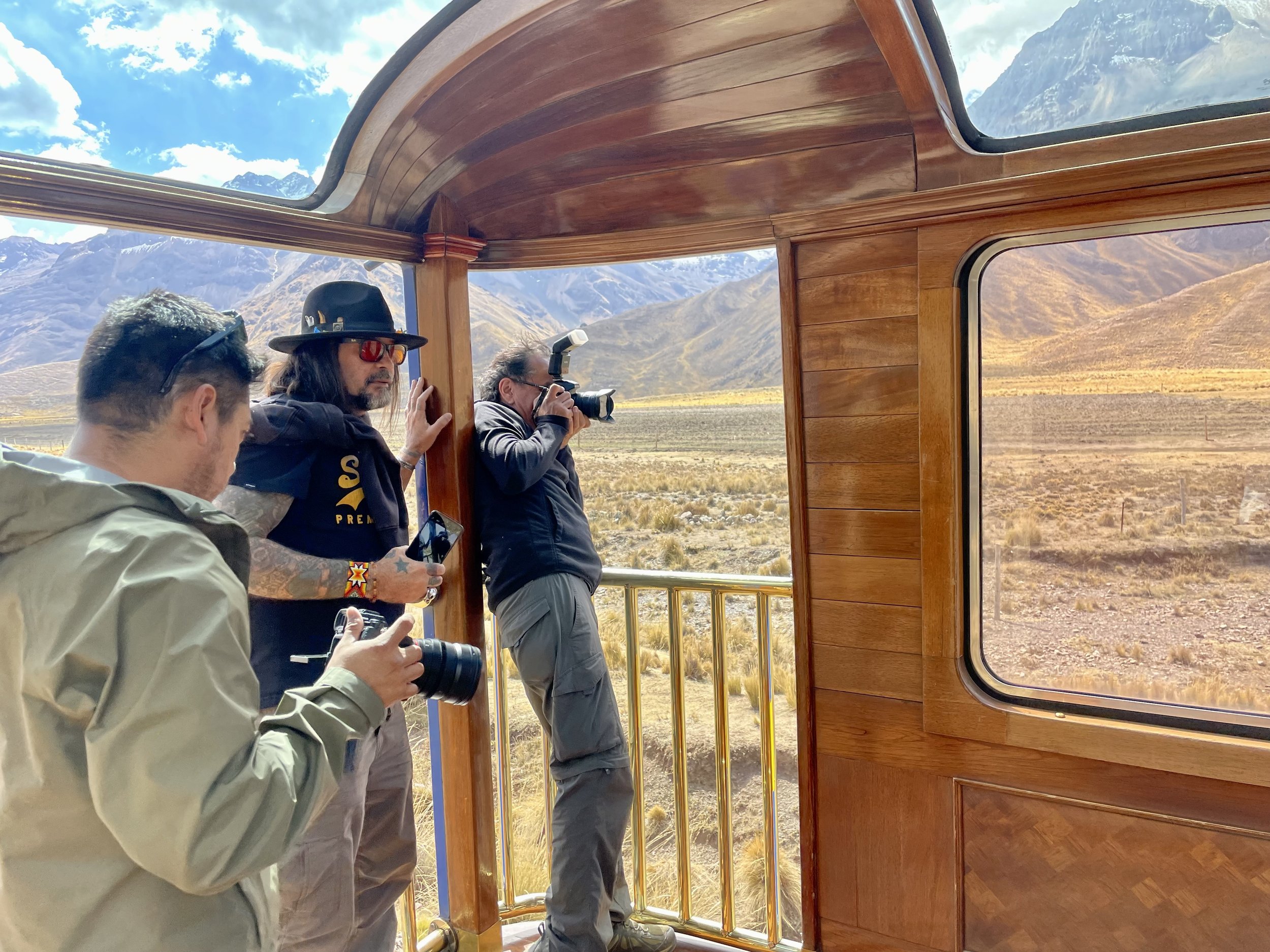
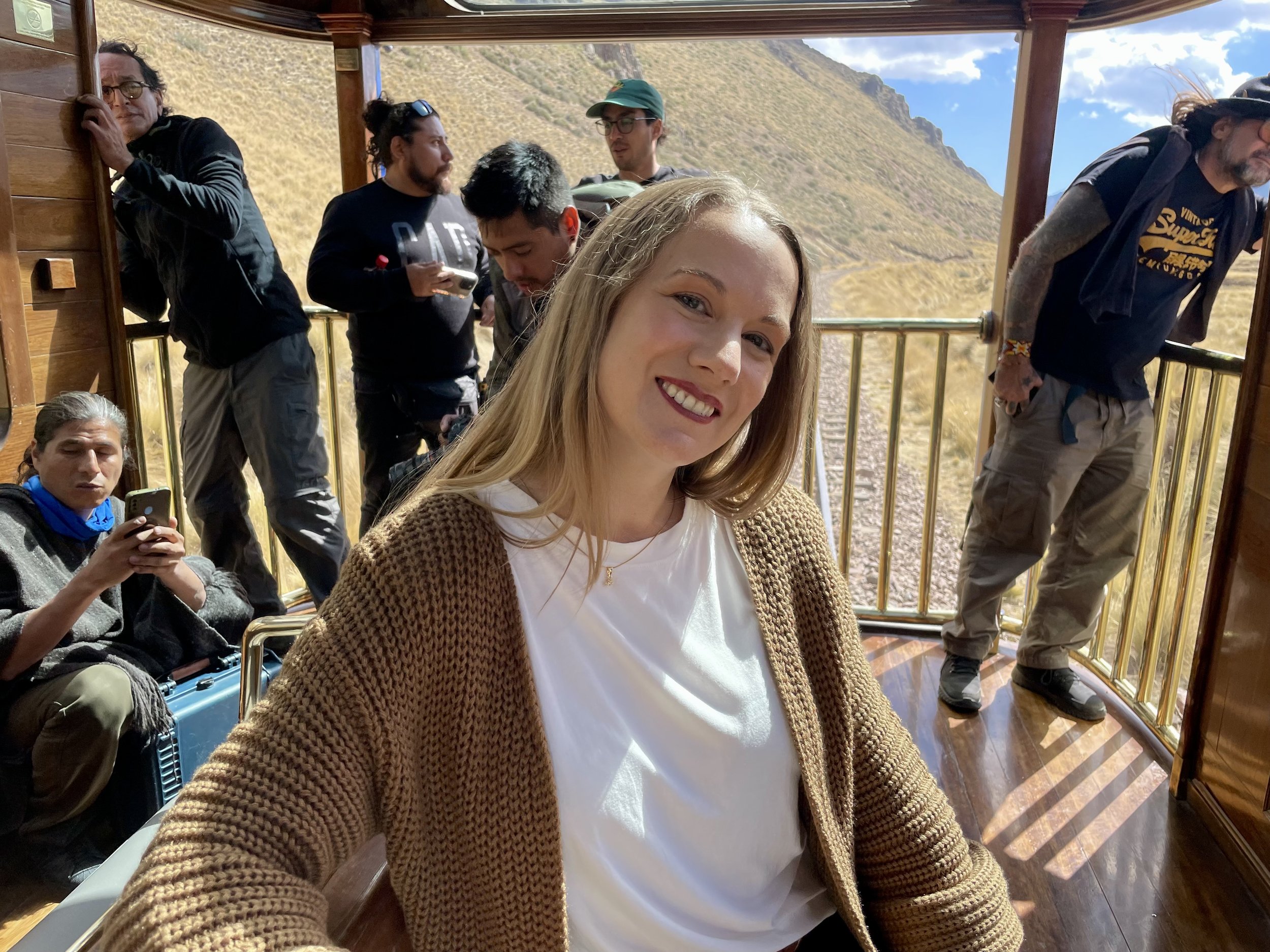
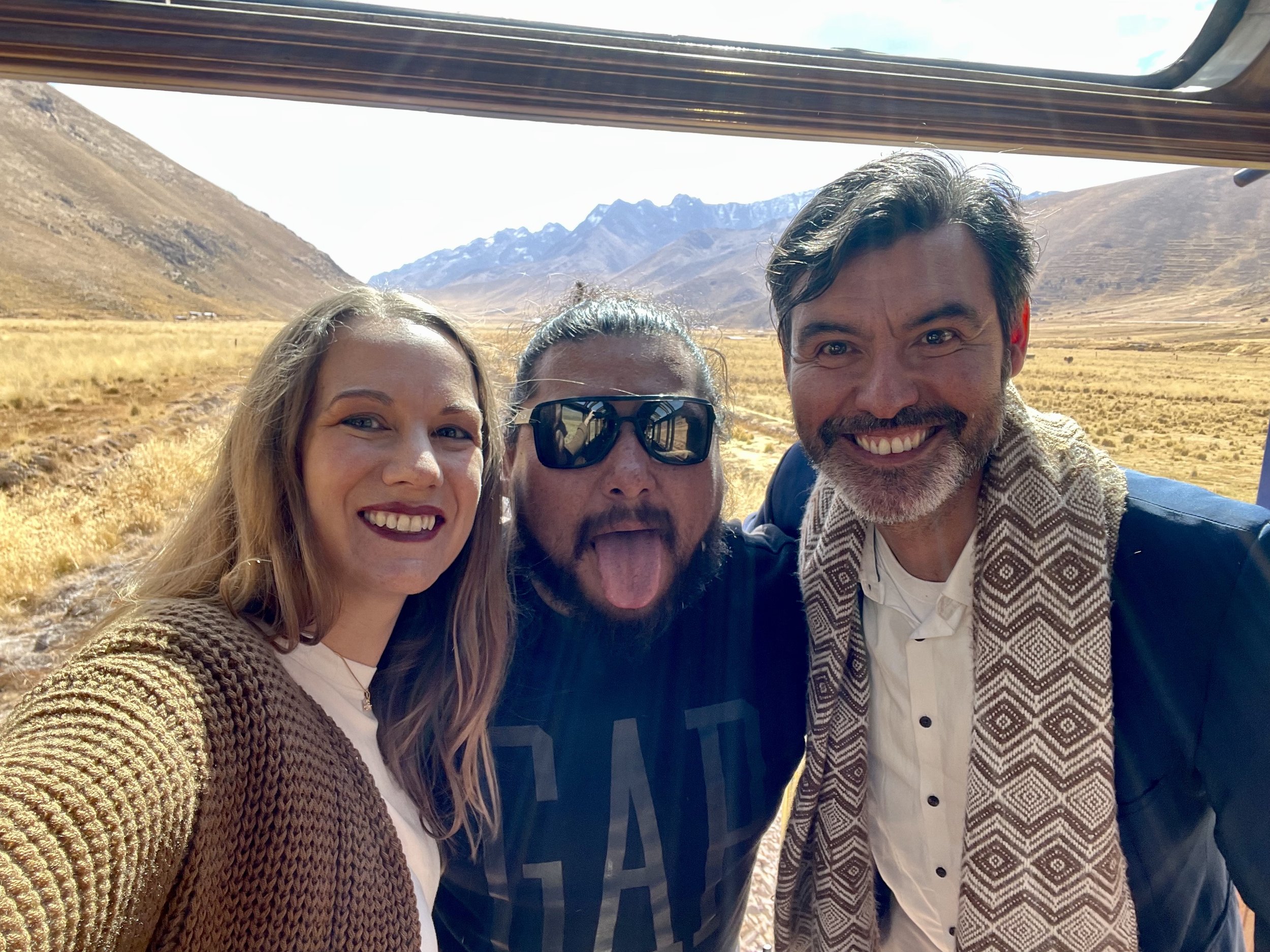
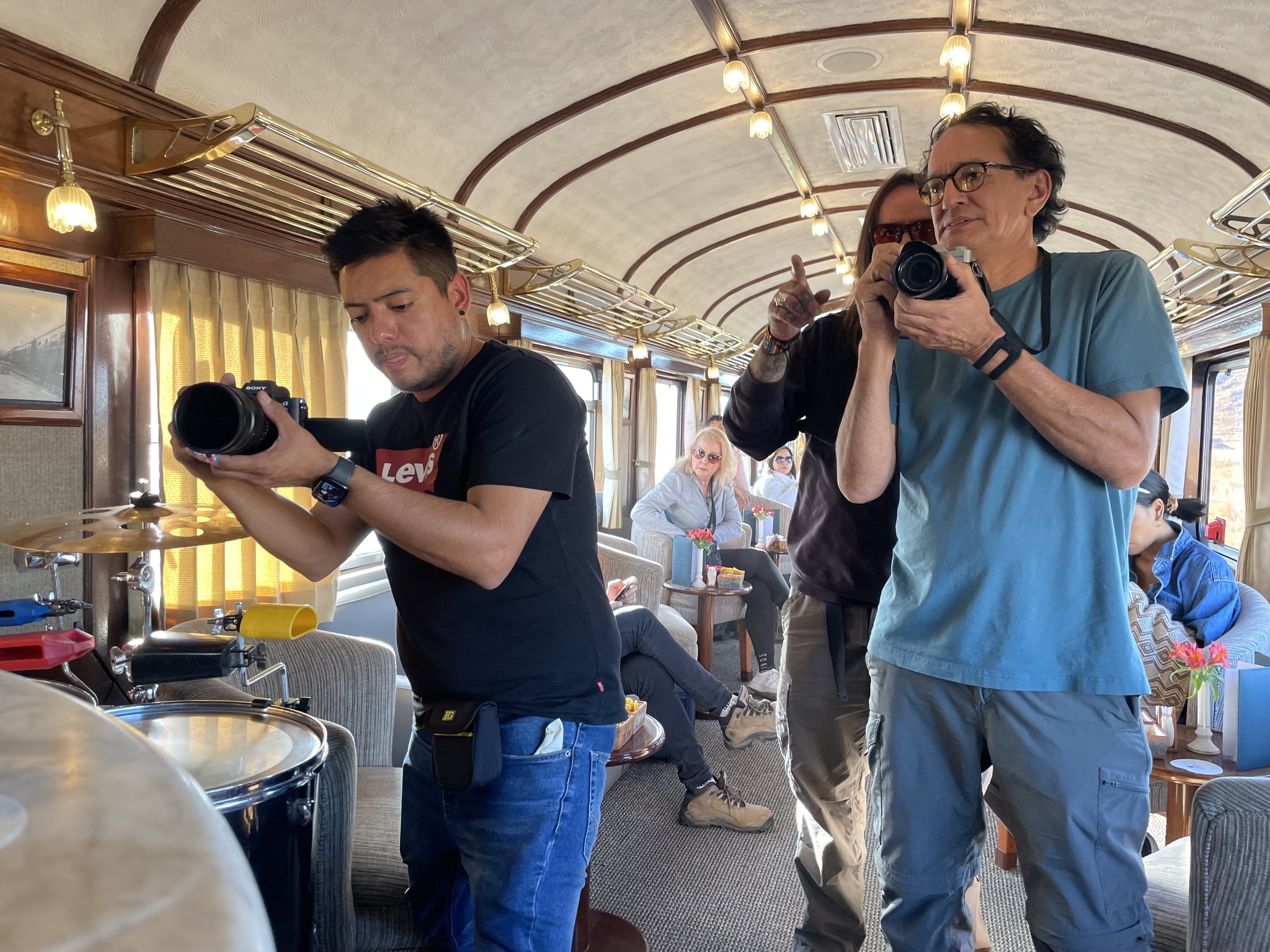

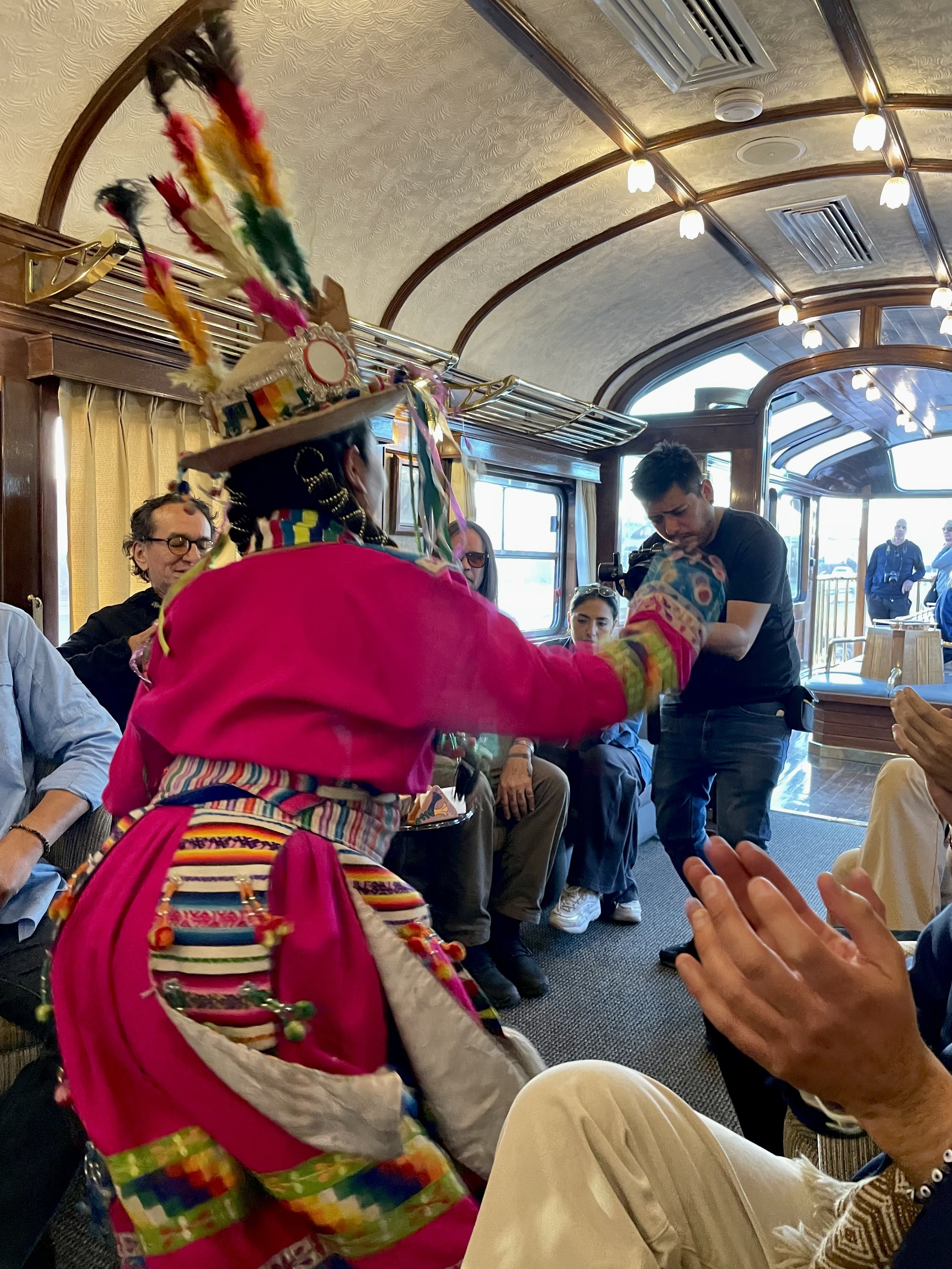
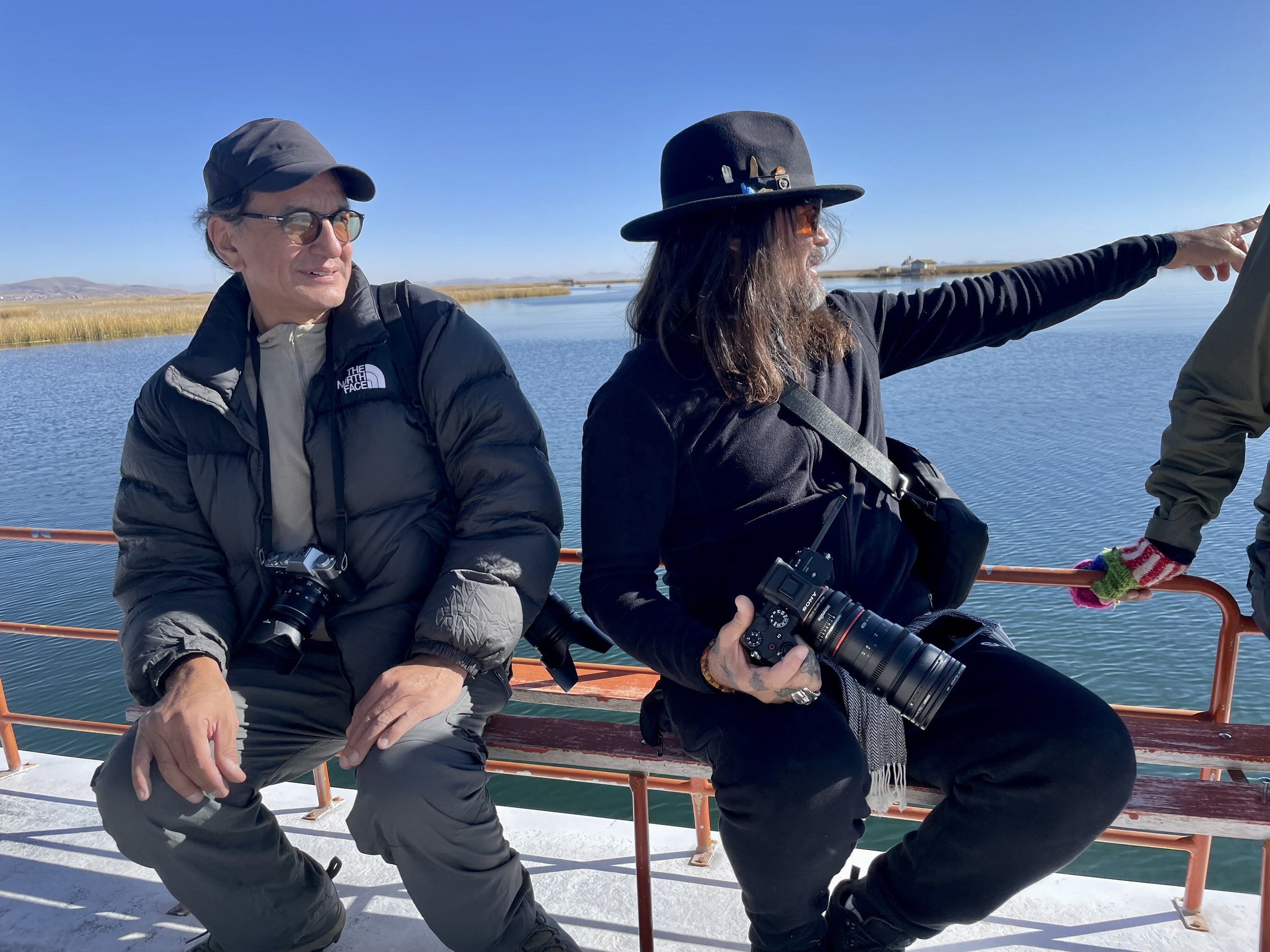
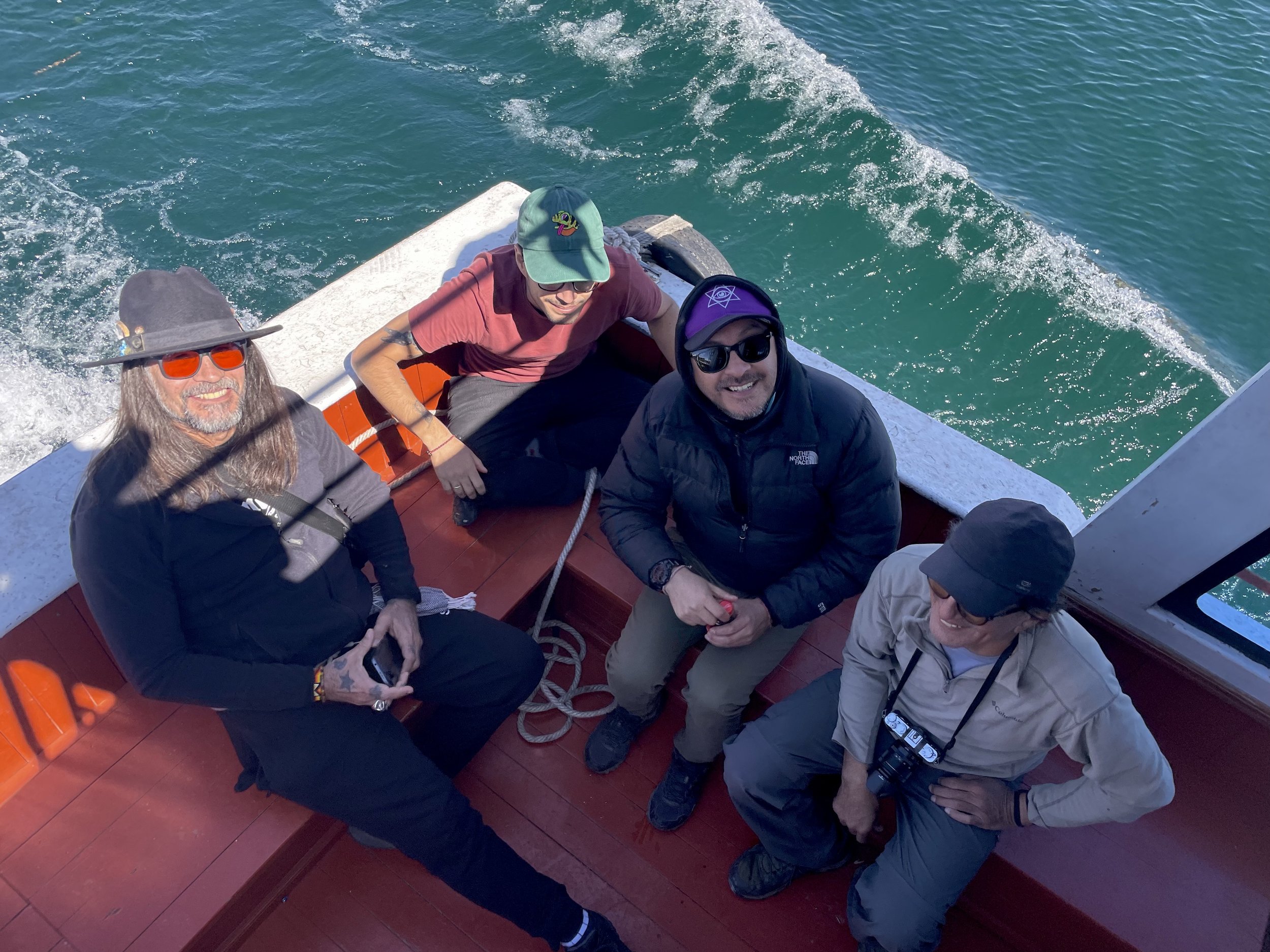
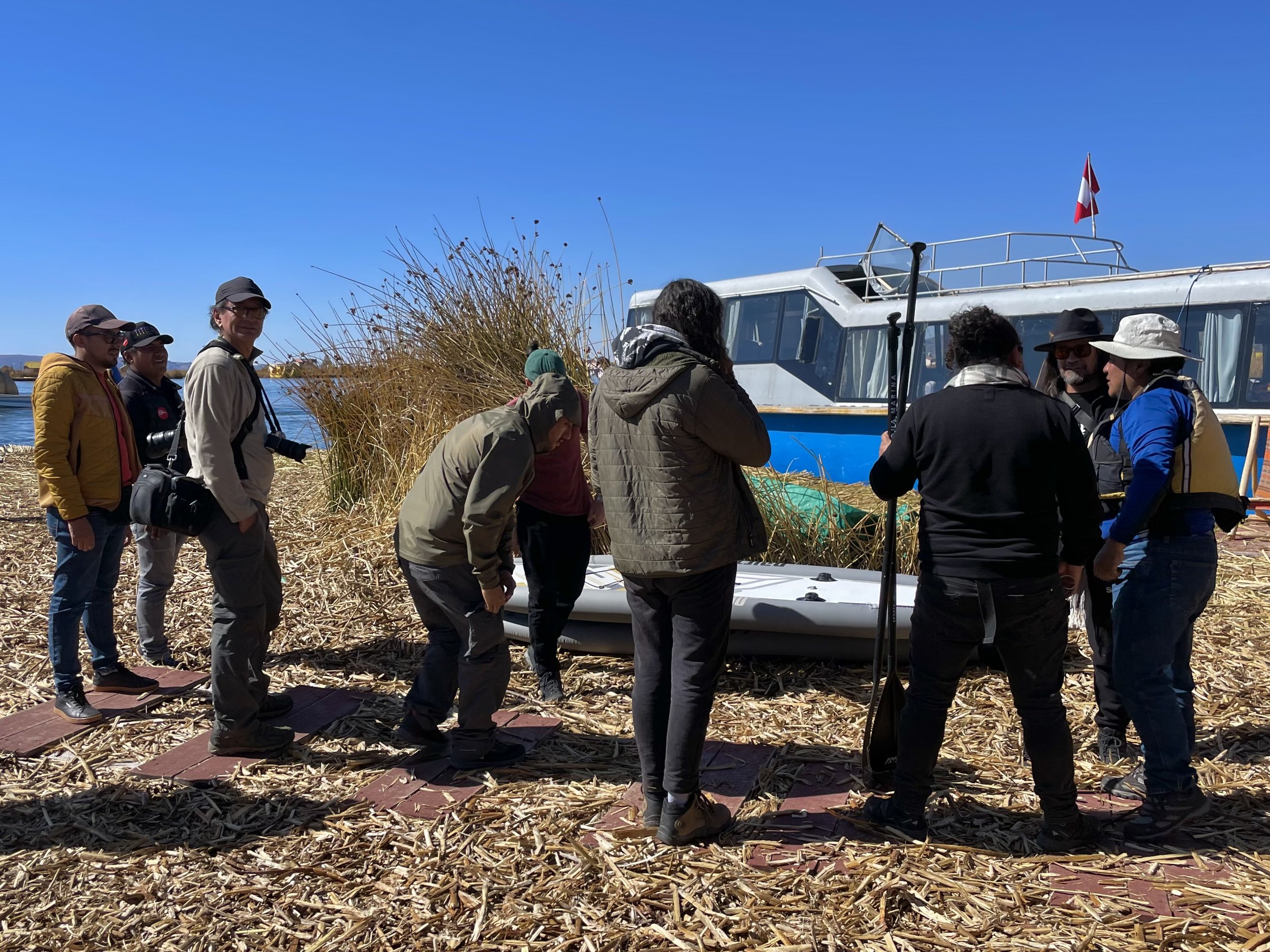
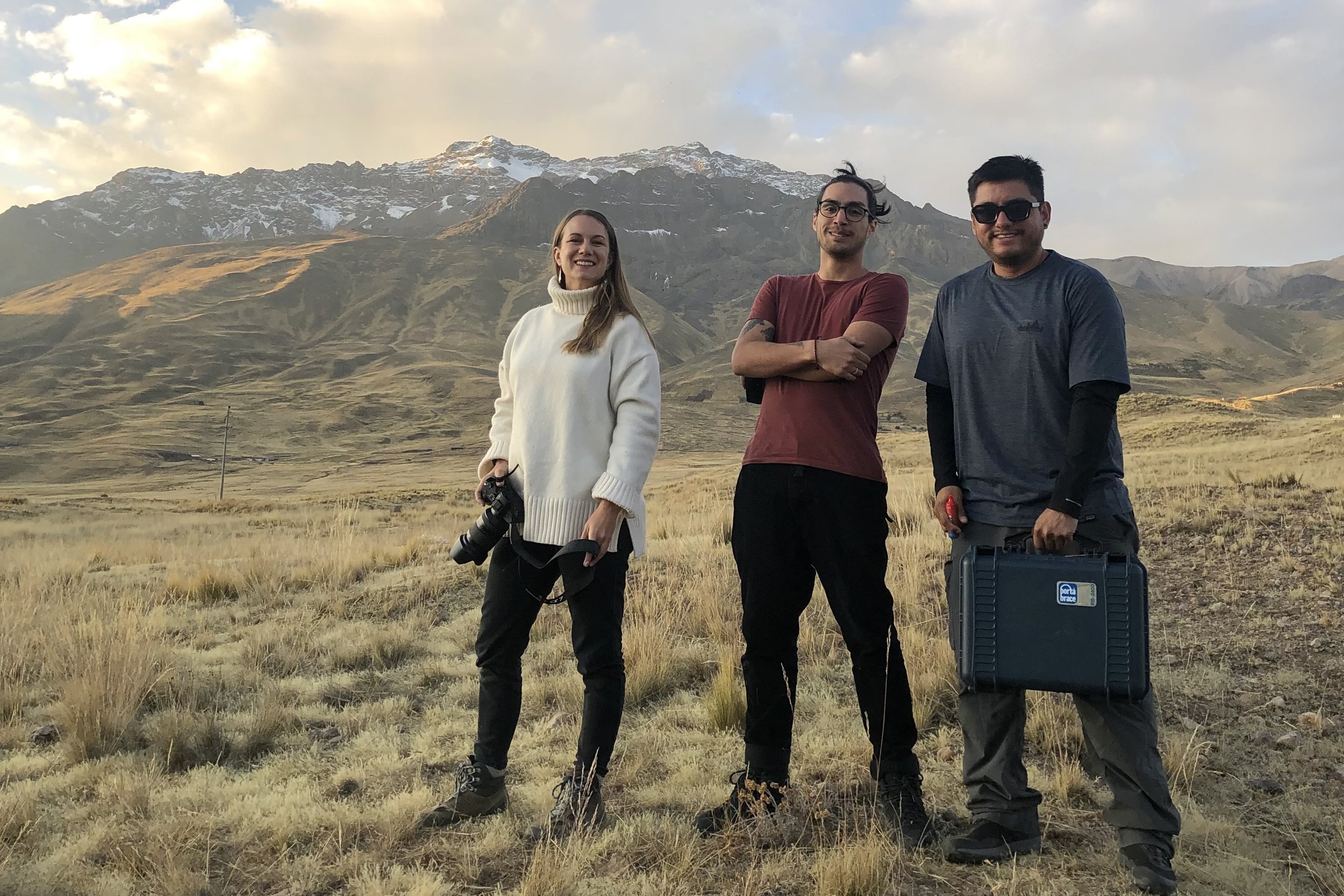
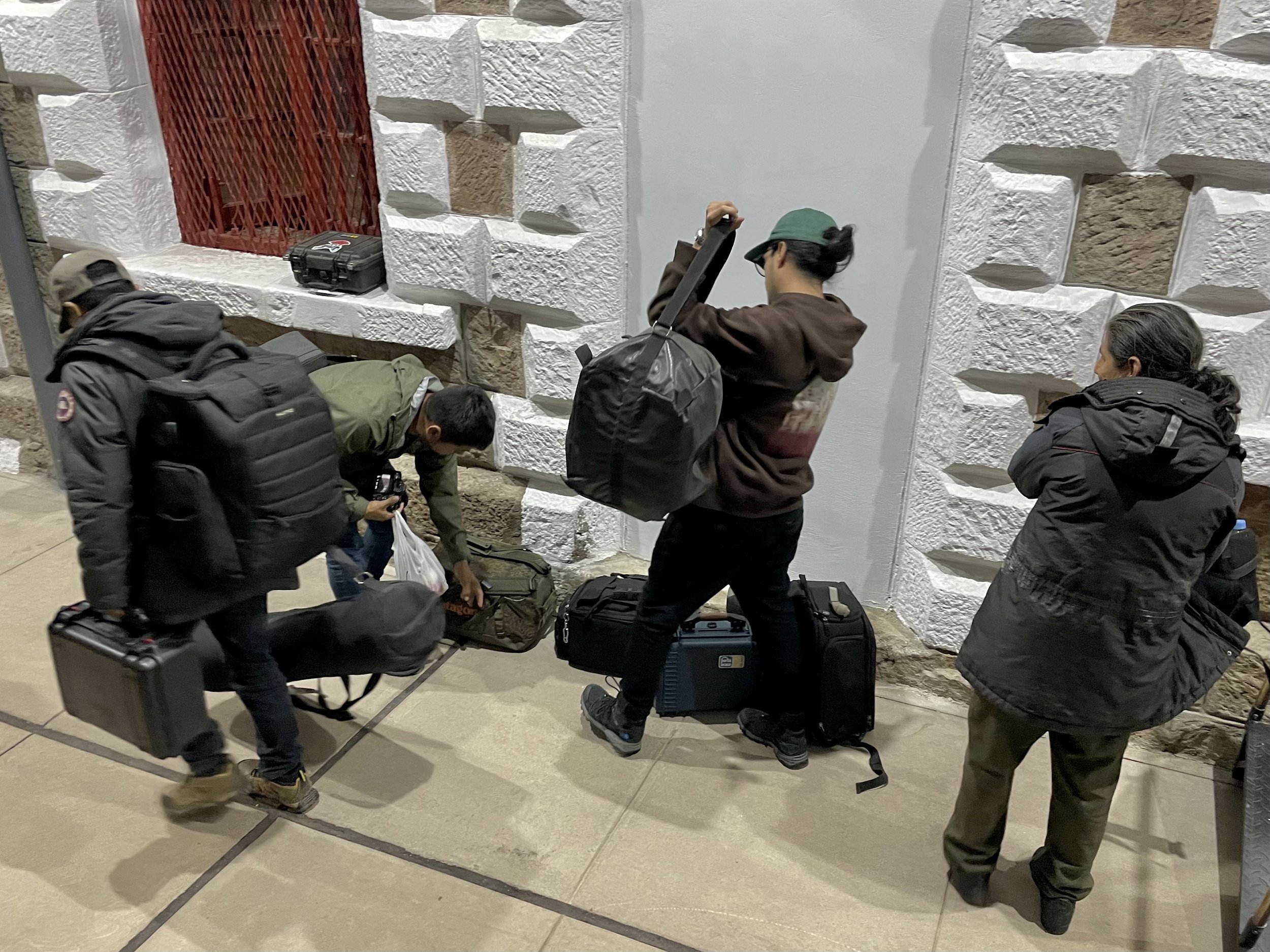
The Espiritu Perú crew were both very professional and a lot of fun.
I’ve never been in a commercial, never had a makeup artist work on me and never had a costume designer tell me what to wear. My only previous experience following instructions from a photographer has been with my friend Amanda. I would never have guessed that her training in elementary school would be useful thirty years later. Thanks, Amanda!
Indra García Hurtado created these outfits for my character, who was supposed to be somebody who retired young and has plenty of money to travel the world. I wish they had allowed her to use more color but apparently the 90s are back and that means beige on beige is back too.
Make up artist
Viviana Caparó was the makeup artist for the shoot and she did a fantastic job working on a moving train. I was so impressed how she managed to put make up on me while we were constantly being jostled around by the train.
Amanda & Richard
Alberto Wirz played my husband for two days and we named our characters Amanda & Richard. (Yes, that’s another shoutout to the person who first taught me about photography!)


